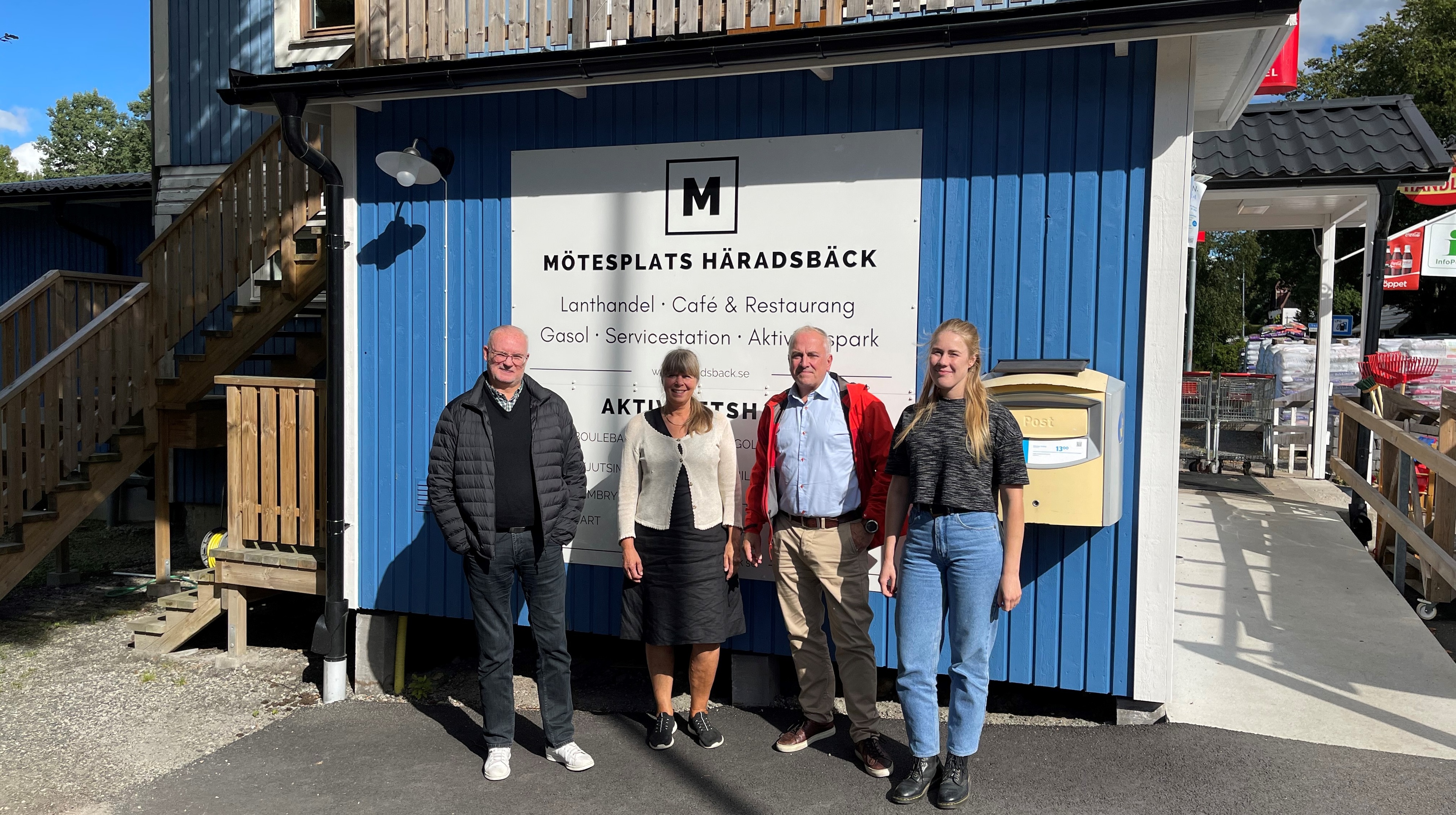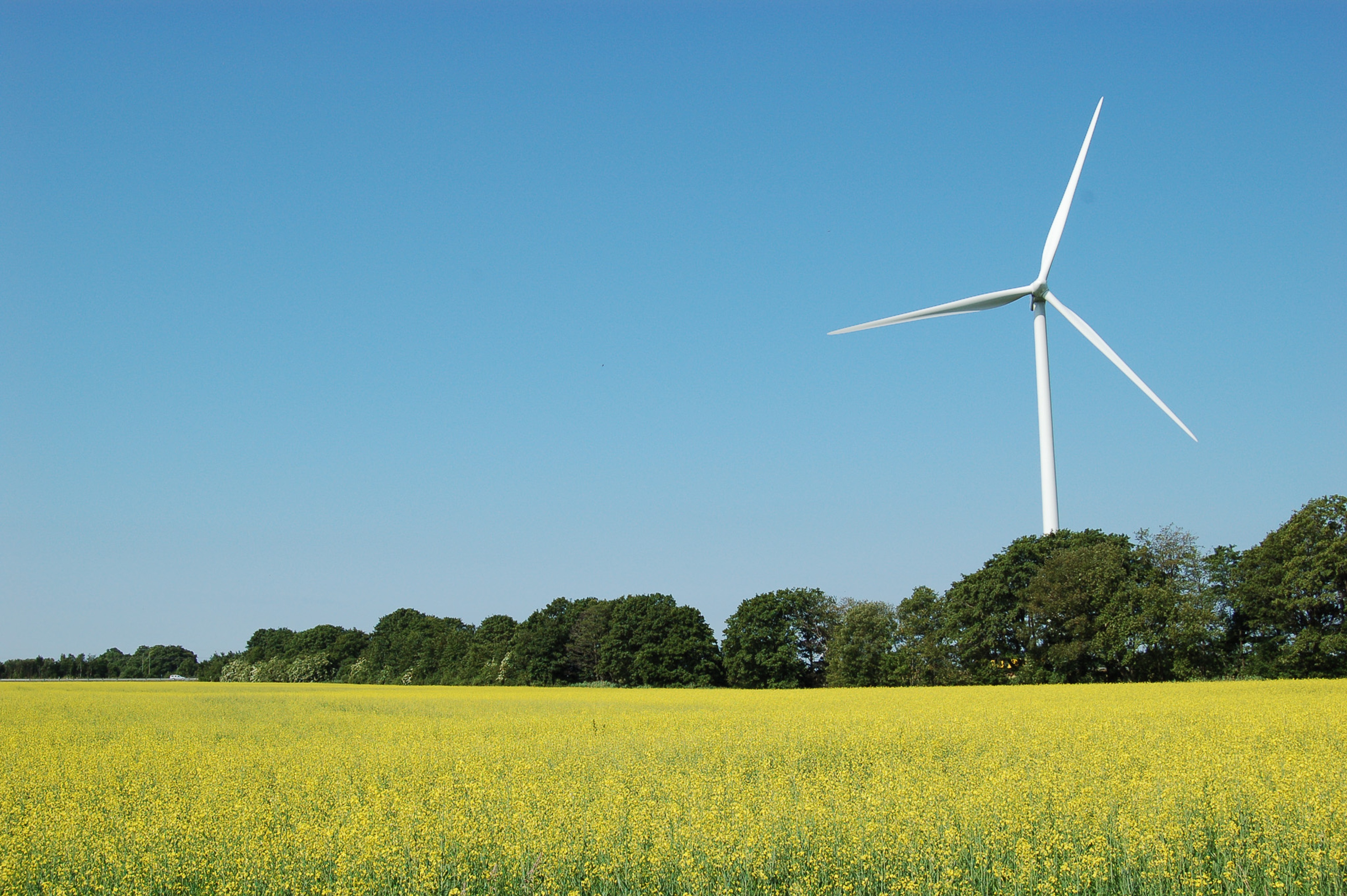Case
How green hydrogen gas can secure rural energy supply in times of crisis
How can rural communities ensure local energy supply in times of crisis? The village of Häradsbäck in Småland wanted to investigate the possibilities of producing and storing green hydrogen gas – both as a backup for its own energy supply and to sell onwards. In a development project, Semcon is now creating a technical concept for the production of green hydrogen gas using solar cells.

CustomerHäradsbäck
IndustryEnergy
CompetencesHydrogen GasEnergy optimisation
Background
In a changeable world, crisis preparedness is important. After storm Gudrun, which swept over Sweden in January 2005 and hit the municipality of Älmhult in Småland hard, the village of Häradsbäck decided to make sure they were better prepared for the future.
"There isn’t one solution for the energy transition that we need to make as a society,’ says Erik Fiedler, Project Manager at Semcon, ‘but rather, we need to combine several different technologies. One exciting track is green hydrogen gas. Many local communities in Sweden and Europe are currently facing the same sorts of challenges as Häradsbäck and the hope is that more can benefit from our findings in the project."
Open source and scalable concept solutions
In the concept study, which is being financed by Vinnova, Semcon’s experts in energy solutions are working to develop a modular, scalable open-source concept for how green hydrogen gas can be produced and stored for crisis-preparedness purposes and, if needed, supply parts of Häradsbäck with electricity. Functions especially important to the society that are prioritized in the project are a home for the elderly, waterworks, fiber node, telecom-mast and Mötesplats Häradsbäck (Meeting point Häradsbäck). The meeting place includes, among other things, a restaurant, cafe and shop with opportunities to provide the residents of Häradsbäck with cooked food, heating, charging mobile phones, places to sleep in a crisis situation and more.
‘We started out by looking at the user patterns and electricity consumption of these selected activities and determining how those could be matched with the hydrogen gas system,’ says Torun Moberg, Energy Consultant at Semcon. ‘There are also interesting opportunities to connect excess heat from hydrogen gas production, compressors and fuel cells into existing heating systems, which could, for example, save energy for the home for the elderly.’
The concept study is not yet completed, but Semcon can already see that the energy from the hydrogen gas system is sufficient to cover the basic electricity needs of societally vital activities. A number of questions remain to be investigated though, such as how hydrogen gas production can be the business opportunity that the village needs.

Hydrogen gas as enabler
‘We turned to Semcon because they worked with hydrogen projects previously and we felt great trust in the team right from the start,’ says Mette Adolfsson, Project Manager and Managing Director of Härlundabygden AB. ‘ This is an exciting journey where we are testing what can work best for us.’
In addition to the production and storage of hydrogen gas, the project also aims to support more sustainable mobility by providing more opportunities for vehicles, such as heavy trucks and other work vehicles, to refuel with green hydrogen gas. In both daily life and times of crisis, this energy solution will help make the countryside more sustainable.
It is an honour to work with things that can contribute to the climate and energy transition, in which hydrogen gas is a very interesting enabler.
– Erik Fiedler, Project Manager at Semcon
In the project, Semcon will deliver:
A concept solution for a hydrogen gas system for crisis preparedness and hydrogen gas refuelling.
A energy usage analysis of how much energy is required to run selected activities in normal conditions and in the event of a crisis.
Design of the system and its ingoing components: solar cell parks, compressors, tanks, hydrogen gas electrolysers, fuel cells and filling station.
Modelling of potential to use surplus from solar cells and hydrogen gas production.
Financial calculations with regard to investment and operation.
Project plan for the next step.
About green hydrogen gas
Green hydrogen gas is produced through electrolysis, which can be simply described as the splitting of water molecules into hydrogen and oxygen using electricity. To be called green hydrogen gas, the electricity must be generated from renewable energy sources such as wind power or solar cells.

